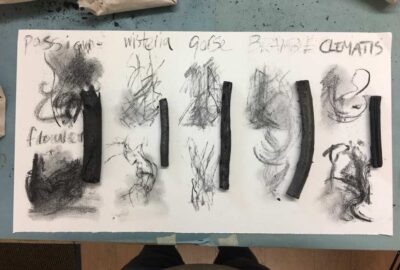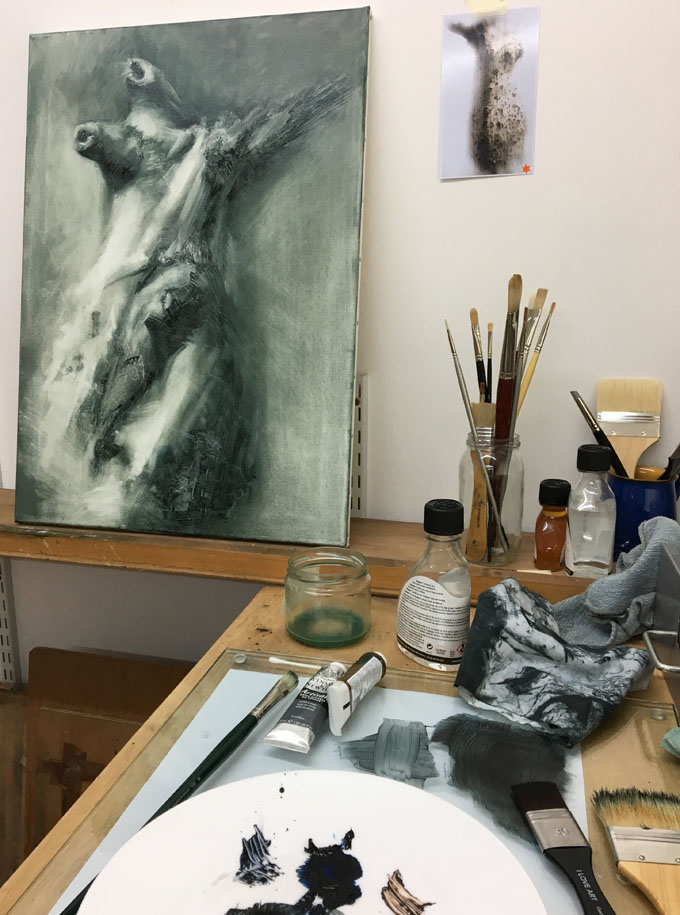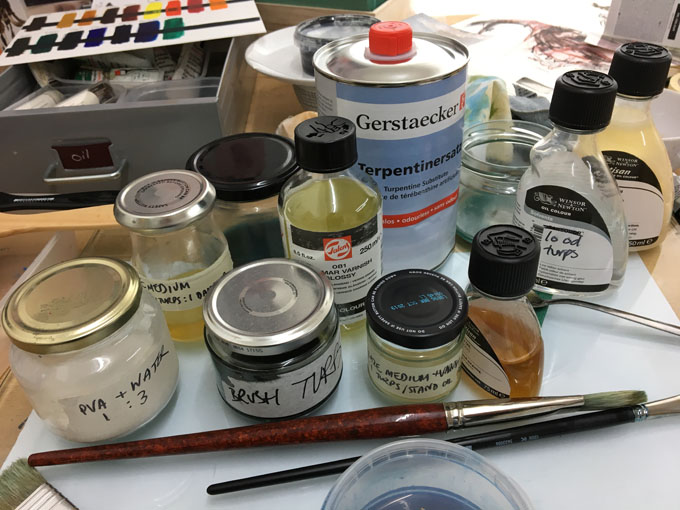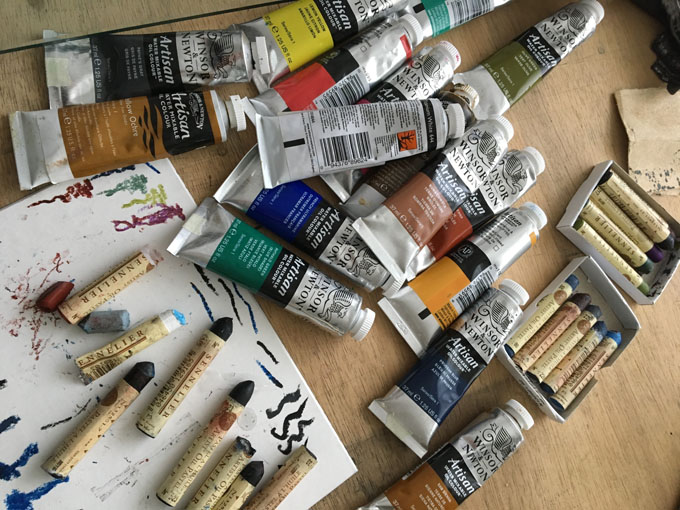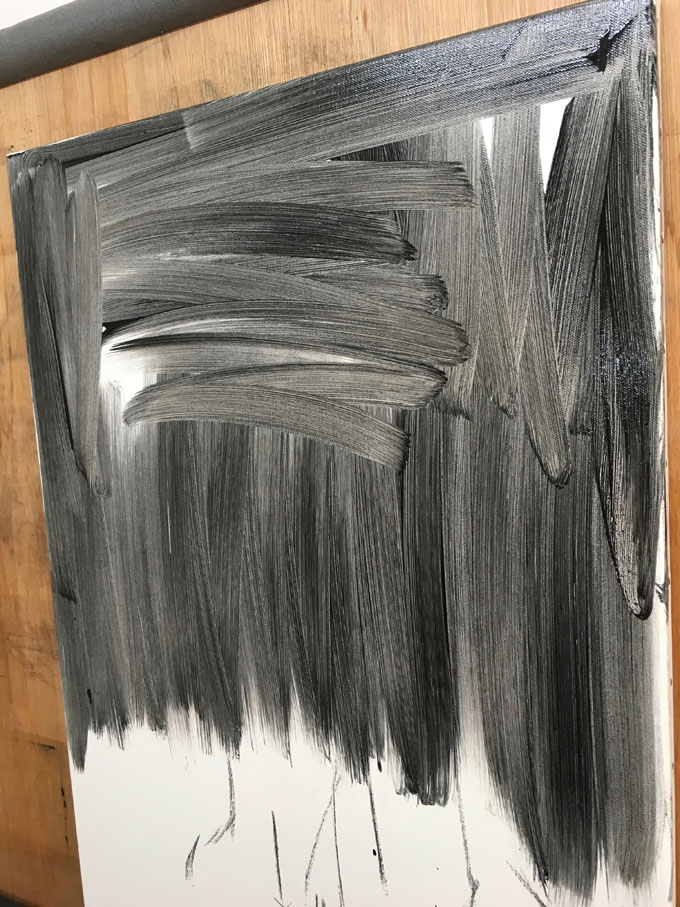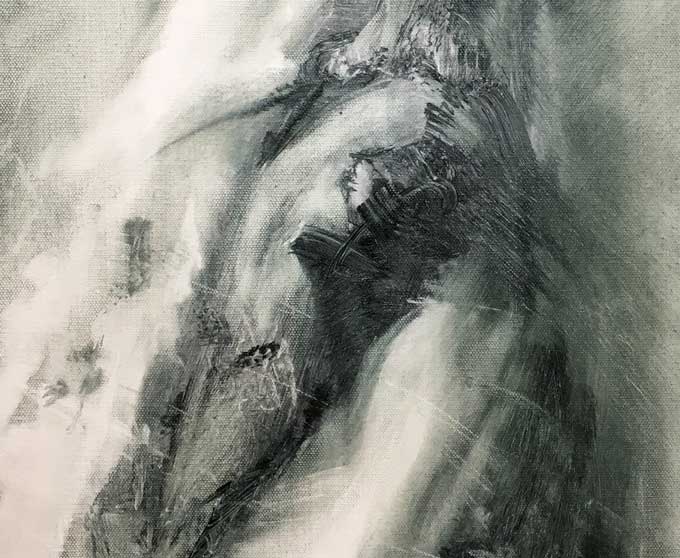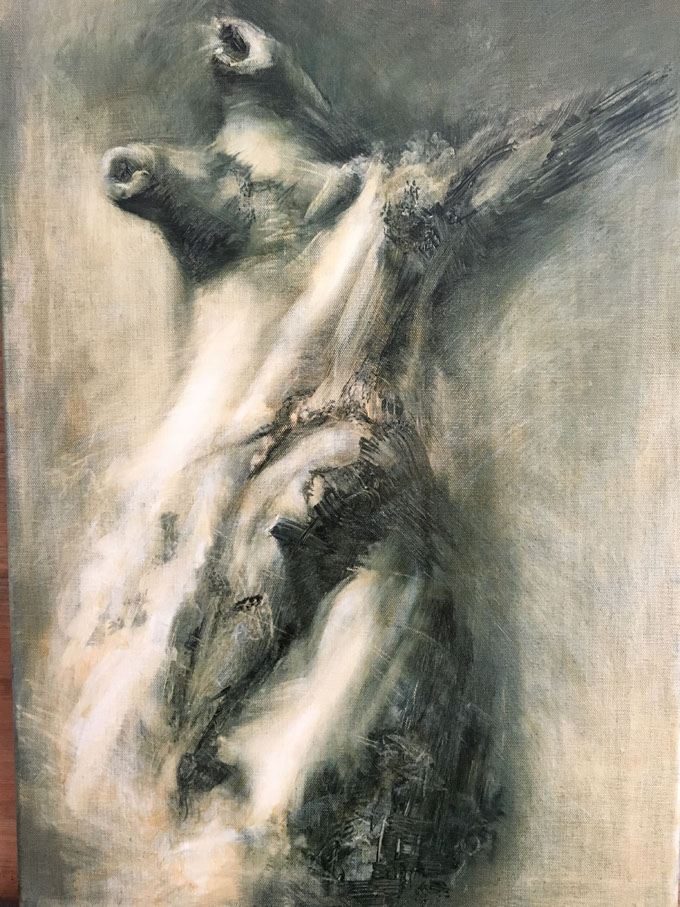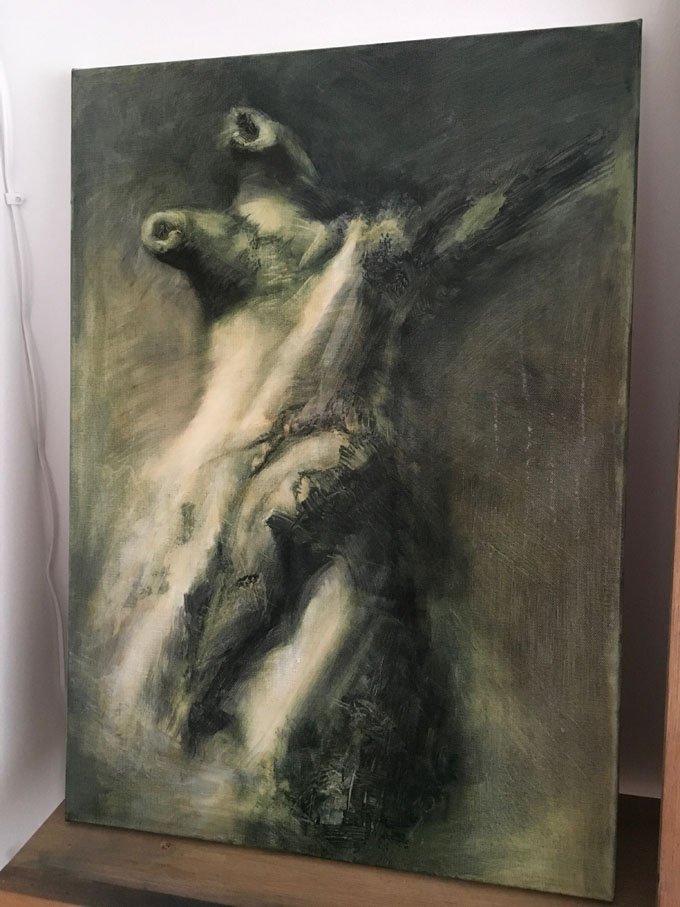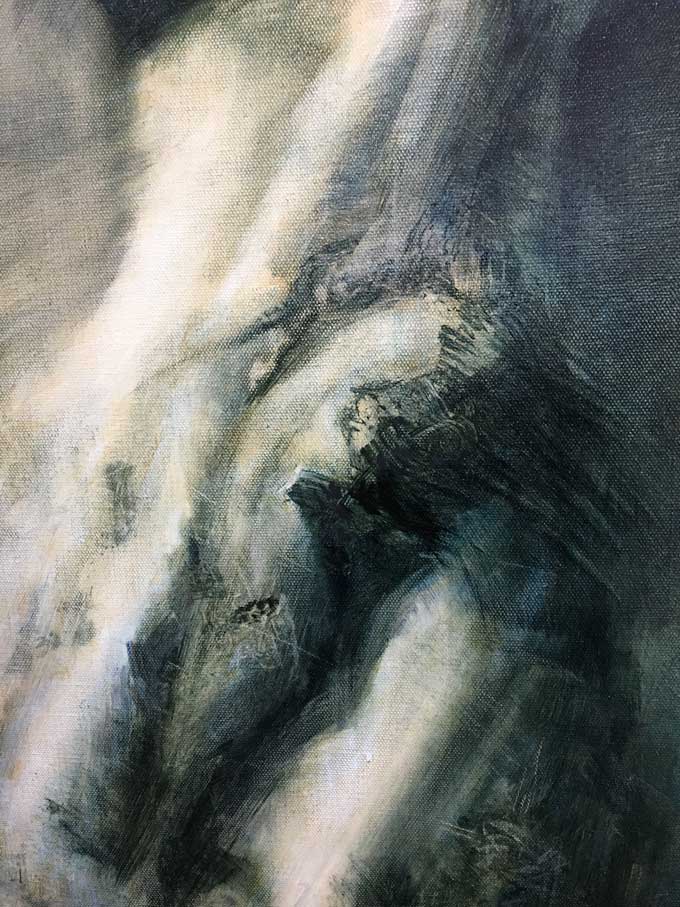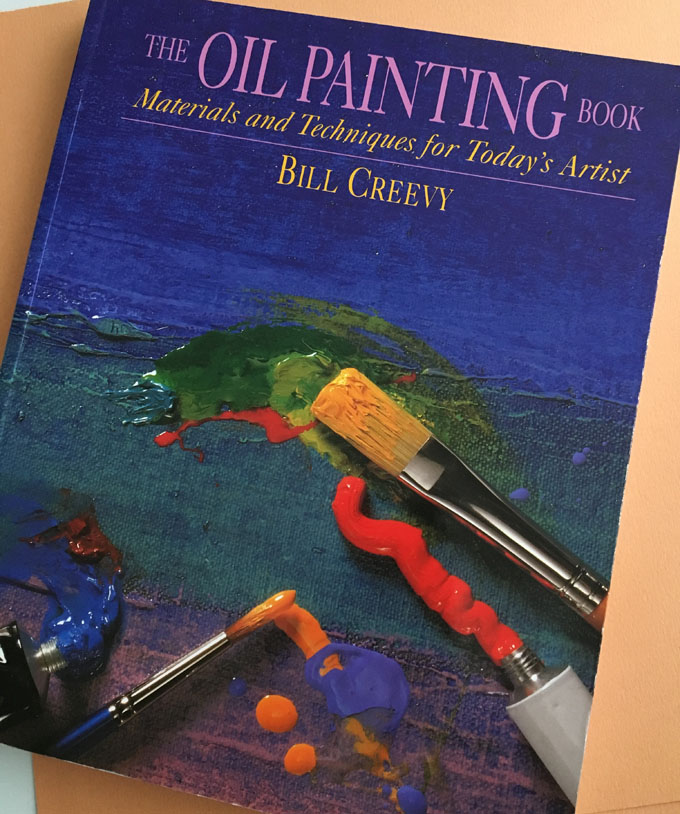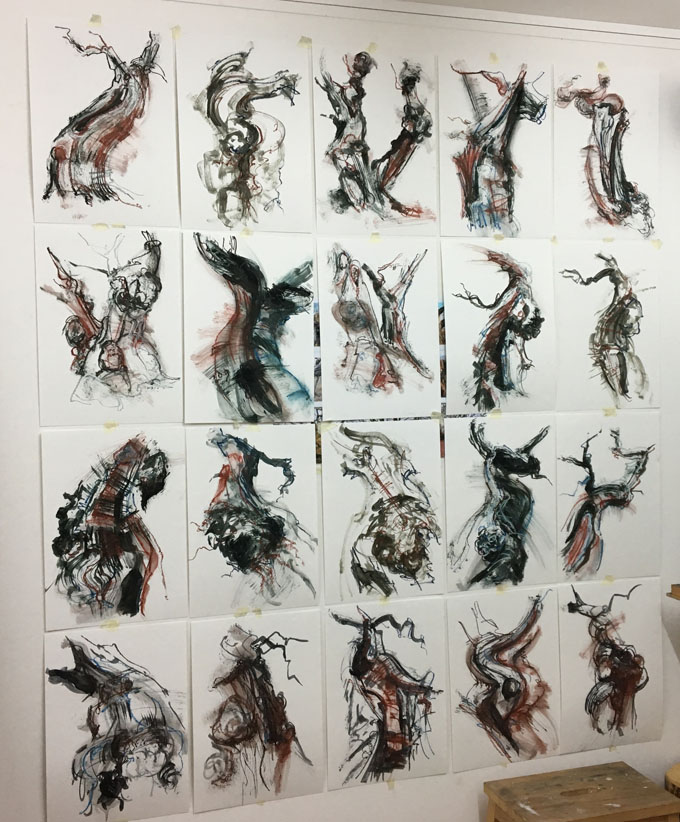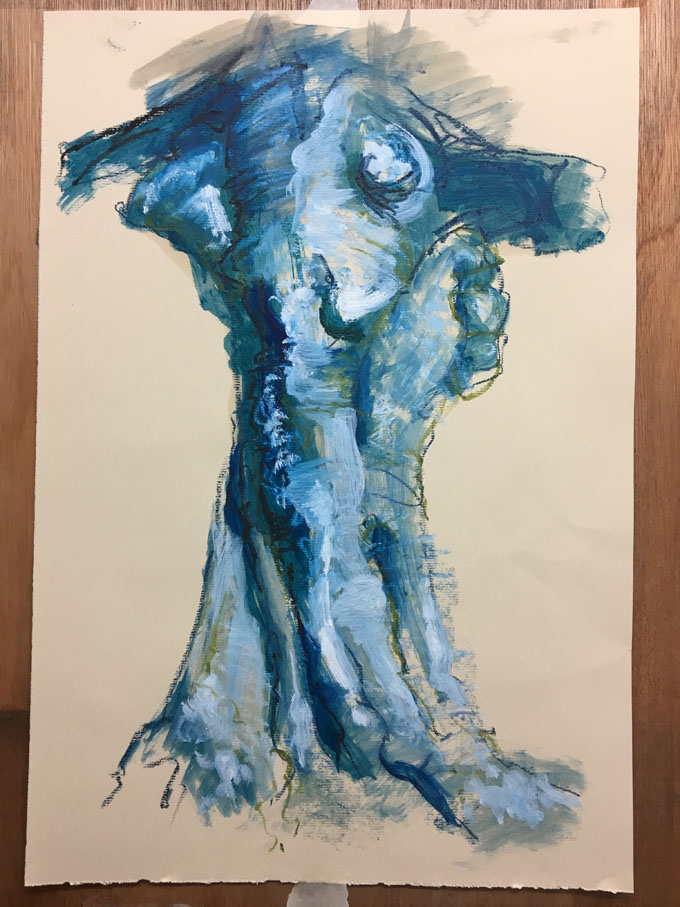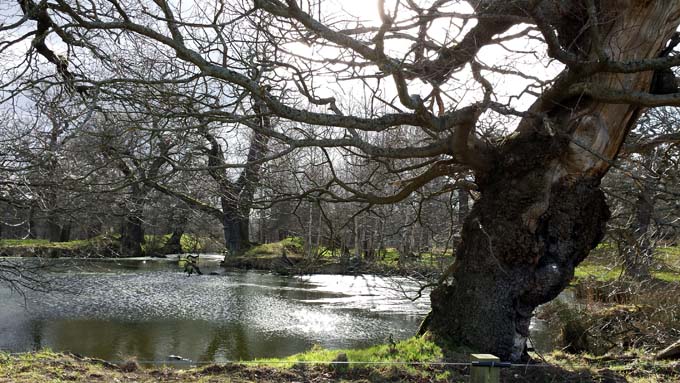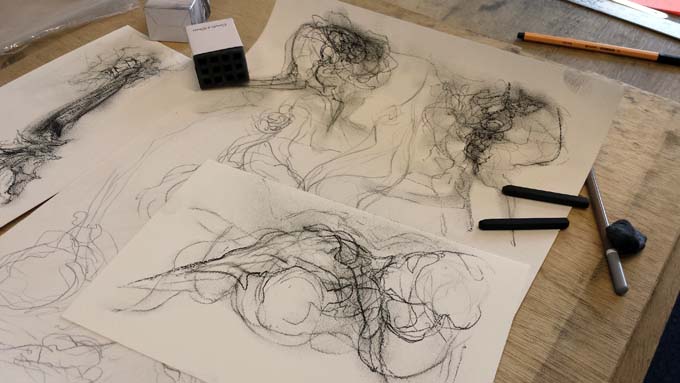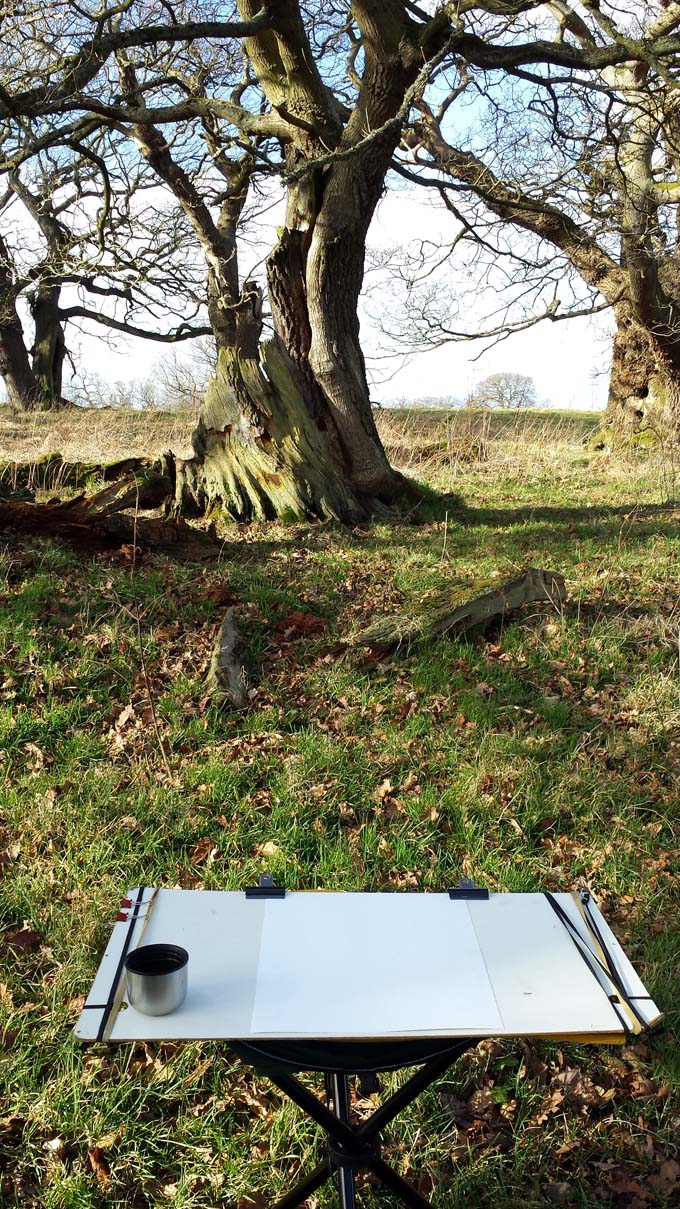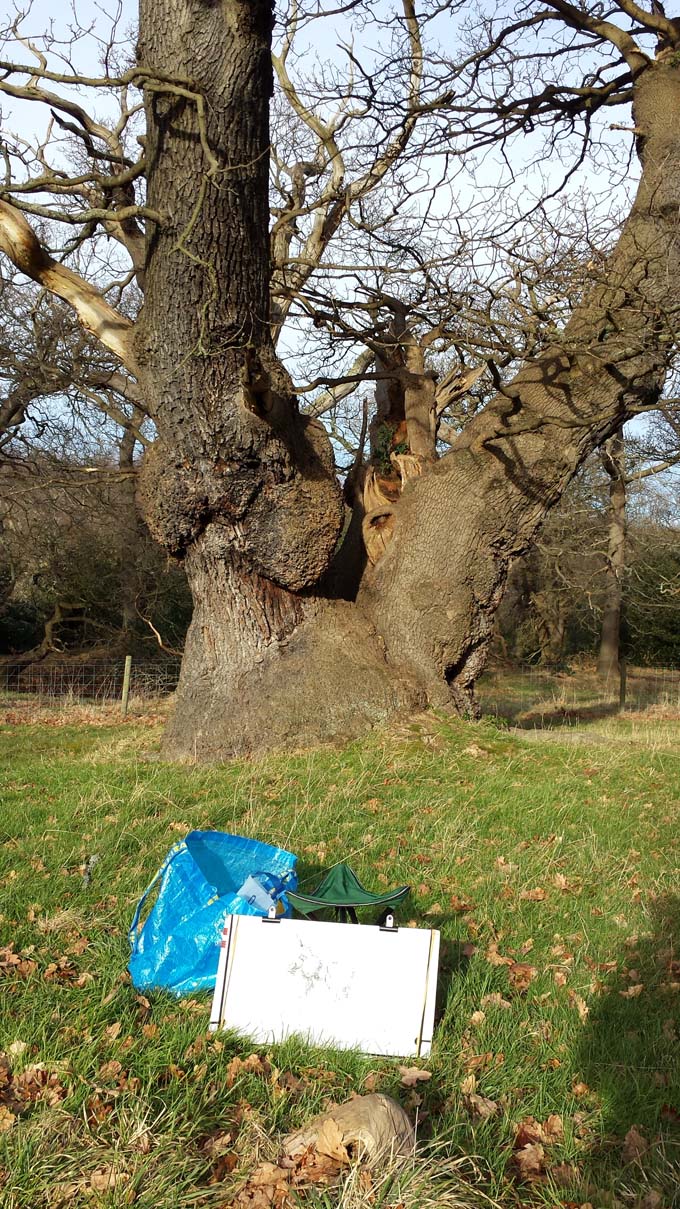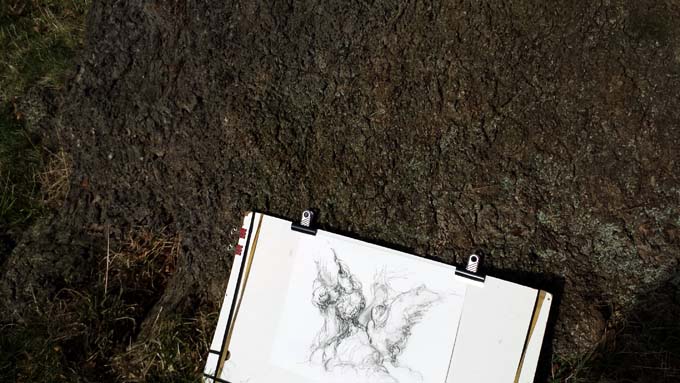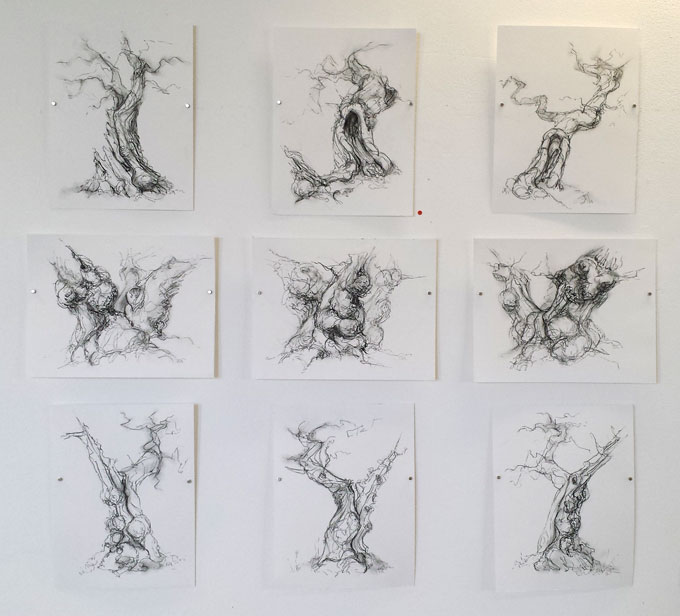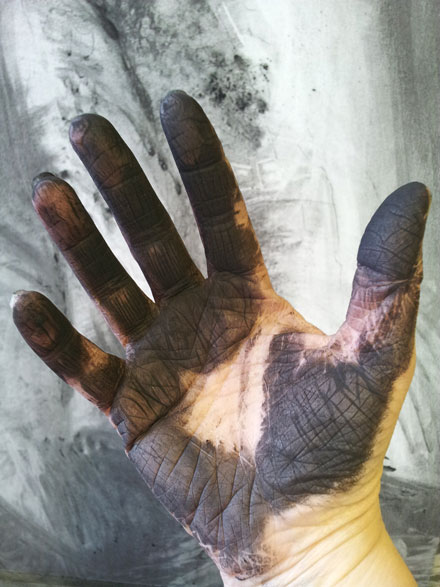The Sweeping Beech

My work is often linked to dance and there’s a common language in the way I draw trees and the human figure. Life drawing, in particular drawing movement has always been a part of my practice, which is why I’m excited to be collaborating with performance artist Suzi Cunningham and film poet Steve Smart on a short film bringing these threads together. Steve and I will be doing some filming while I’m on residency at Marchmont in June.

I found this dancing tree in the grounds of Marchmont House. There’s an 18th century elegance to it, with a graceful sweep of skirt above the hint of a bodice. If you look closely there’s also extensive scarring around the base, most likely from bark damage by grazing animals. In the time I spent with the tree that day I saw hares, roe deer and lots of sheep, so perhaps it’s a favourite spot for the nibblers.

As the sun tracked around the sky, I returned to the tree several times to get images in different lights. I don’t know yet which angles I’ll choose for the drawings – those decisions will come during my time in The Old Squash Court. The tree will tell me.
Read the full Marchmont story here.
 In preparation for my drawing workshops I spend some time thinking carefully about which materials to introduce my students to, which will work best for their level of learning, which will be exciting and fun to use, which will suit the location and tone of the day. I also like to make people feel like they have their own individual materials for the duration of the workshop, so I use small metal tins for the fragile stuff and bag it all up so everyone has the same selection.
In preparation for my drawing workshops I spend some time thinking carefully about which materials to introduce my students to, which will work best for their level of learning, which will be exciting and fun to use, which will suit the location and tone of the day. I also like to make people feel like they have their own individual materials for the duration of the workshop, so I use small metal tins for the fragile stuff and bag it all up so everyone has the same selection.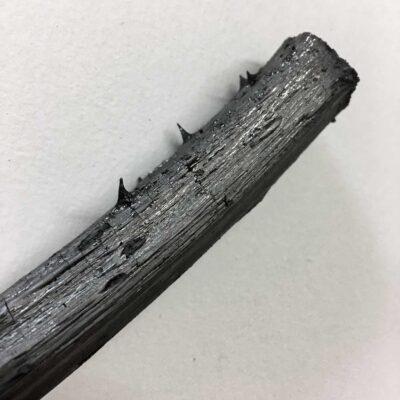 My exciting little package arrived nestled beautifully in sweet smelling straw, wrapped in carefully labelled paper – nice touch! I set to work testing them in a not very methodical way, just allowed the marks to flow as the charcoals suggested.
My exciting little package arrived nestled beautifully in sweet smelling straw, wrapped in carefully labelled paper – nice touch! I set to work testing them in a not very methodical way, just allowed the marks to flow as the charcoals suggested.